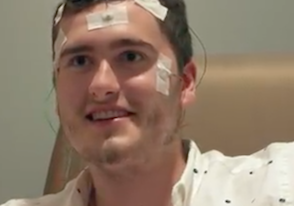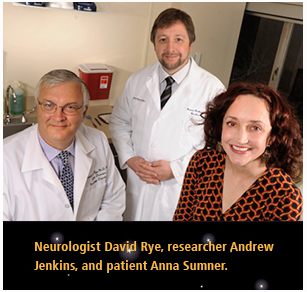Nothing he tried had worked. For Sigurjon Jakobsson, the trip to Atlanta with his family was a last-ditch effort to wake up. He had struggled with sleeping excessively for several years before coming from Iceland to see a visionary neurologist, who might have answers.
In high school, Sigurjon was a decathlete competing as part of Iceland’s national sports team. But at the age of 16, an increasing need for sleep began to encroach upon his life. Sigurjon needed several alarm clocks to get out of bed and was frequently late to school or his job at a construction company. He often slept more than 16 hours in a day.

Sigurjon feeling awake (Atlanta, summer 2018)
When Sigurjon describes his experiences, they sound like depression, although his mood and lack of motivation appear more a consequence of his insatiable desire to sleep. He quit sports. He dropped out of college and became isolated and lost touch with close friends.
“Your will to do things just kinda dies,” he says. “And then you’re always trying and trying again. It just gets worse. You kinda die inside from being tired all the time.”
At the recommendation of a neurologist in Iceland, Sigurjon’s family sought out David Rye, who is known internationally for his research on idiopathic hypersomnia, a poorly understood sleep disorder. Read more







